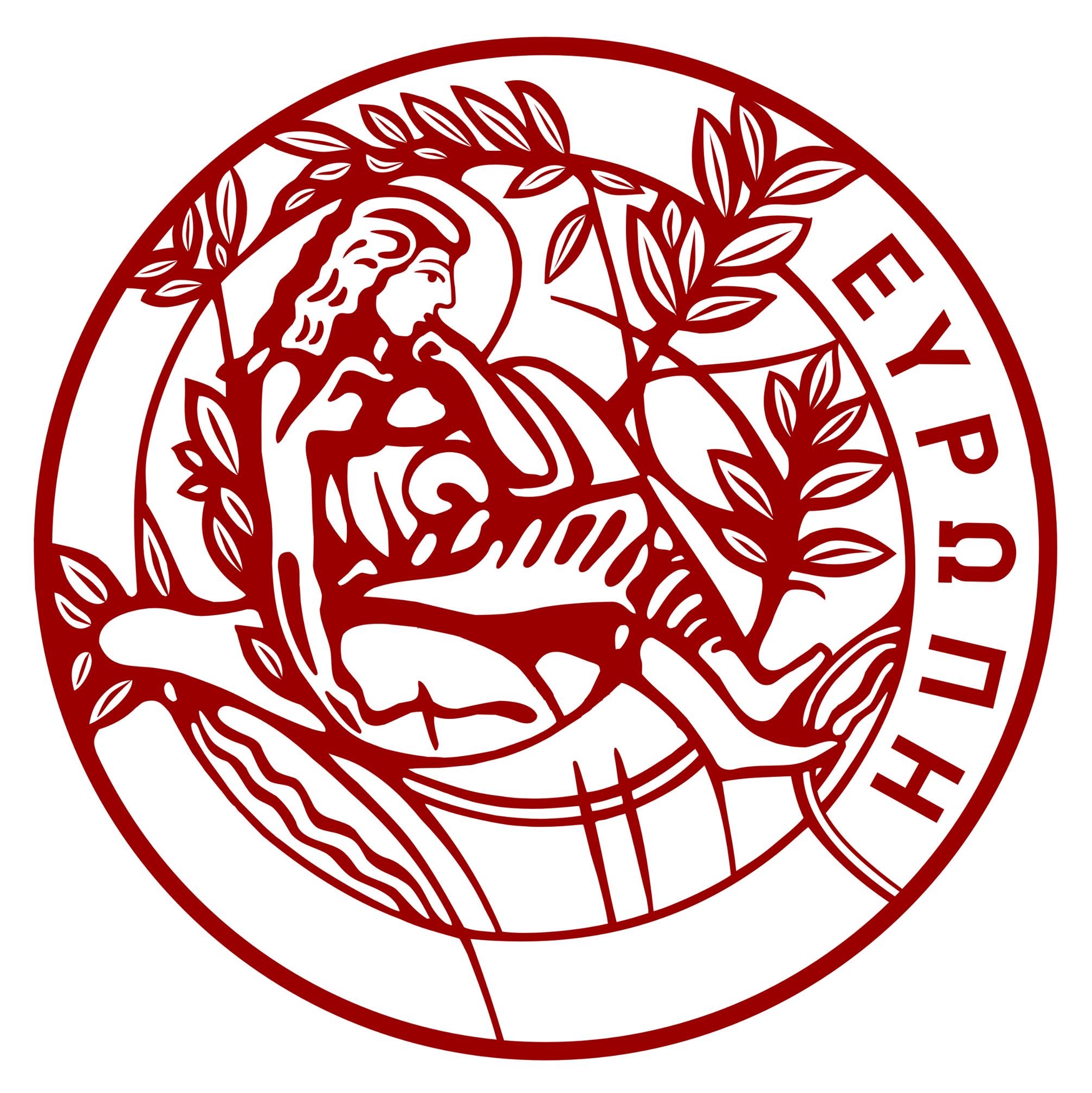Το Διδασκαλείο Κρήτης στο Ηράκλειο είχε στην κατοχή του πλήθος εποπτικών διδακτικών μέσων (εποπτικό υλικό και σχολικός εξοπλισμός) που χρησιμοποιούνταν κατά την εκπαιδευτική λειτουργία του. Τα μέσα αυτά αποτελούσαν ένα σημαντικό μέρος της κινητής περιουσίας του ιδρύματος, όπως προκύπτει και από την υπηρεσιακή αλληλογραφία του Διδασκαλείου. Το υλικό και ο εξοπλισμός αυτός διακρίνονται στις ακόλουθες κατηγορίες: α. Σχολικές Εικόνες. β. Σχολικοί Χάρτες. γ. Κεντήματα Διδασκαλείου. δ. Σχολικά έπιπλα. ε. Ποικίλα Αντικείμενα συλλογών και σχολικού εξοπλισμού. στ. Φωτογραφίες μαθητών/τριών και διδακτικού προσωπικού. στ. Εποπτικό υλικό μαθημάτων φυσικών επιστημών. ζ. Γραφική ύλη.
Η κατηγορία «Γραφική Ύλη» περιέχει γραφική ύλη διδασκαλίας και γραφής των μαθητών/τριών που εντοπίστηκε στα Πρότυπα Δημοτικά σχολεία του Διδασκαλείου Κρήτης. Ανάμεσα στα αντικείμενα της σχολικής ζωής συγκαταλέγονται οι κασετίνες, οι κονδυλοφόροι, οι κιμωλίες, τα μελάνια, τα μελανοδοχεία κ.ά., τα οποία συνθέτουν όψεις της καθημερινότητας του σχολείου. Να σημειωθεί ότι η αγορά της γραφικής ύλης, που απαιτούνταν για τη φοίτηση των μαθητών/τριών, αποτελούσε αρκετές φορές ένα επιπλέον κόστος για τις οικογένειες.Το ελληνικό κράτος, υιοθετώντας μια προνοιακή αντίληψη (Ν. 5019/1932), ίδρυσε το 1937 τον ημικρατικό οργανισμό «Ιματιοθήκη του Μαθητού», που υπαγόταν στο Υπουργείο Πρόνοιας, με σκοπό την ένδυση, υπόδηση και τον εφοδιασμό των άπορων μαθητών/τριών με βιβλία και γραφική ύλη.
Το συγκεκριμένο εργαλείο γραφής φέρει την ονομασία πλάκα. Έχει ορθογώνιο σχήμα και αποτελείται από μία σχιστολιθική πλάκα, πλαισιωμένη από ένα ξύλινο τελάρο, πάνω στην οποία έγραφαν οι μαθητές/τριες τα πρώτα τους γράμματα με το κονδύλι. Η μία πλευρά της πλάκας ήταν για τη γραφή και η άλλη για την αριθμητική. Η πλάκα είχε διάφορα μεγέθη και συνήθως στο ξύλινο πλαίσιο υπήρχαν δύο τρύπες, όπου έδενε ο σπάγγος που συγκρατούσε το κονδύλι και το σφουγγάρι με το οποίο ο/η μαθητής/τρια έσβηνε.
(EL)
The Didaskaleion of Crete in Heraklion had in its possession a number of visual aiding teaching materials (visual material and school equipment) that were used during its educational function. These materials constituted an important part of the movable property of the institution, as it can be seen from the official correspondence of the Didaskaleion. This material and equipment are divided into the following categories: a. School pictures. b. School maps. c. Embroidery of the Didaskaleion. d. School furniture. e. Various items of collections and school equipment. f. Photographs of students and teaching staff. f. Aiding material for natural science courses. g. Stationery.
The category "Stationery" contains teaching and writing materials of the students located in the Standard Primary Schools of the Didaskaleion of Crete. Among the objects of school life are caskets, tubers, chalks, inks, inkwells, etc., which make up aspects of the daily life of the school. It should be noted that the purchase of stationery, which was required for the students' studies, was several times an additional cost for the families. The Greek state, adopting a welfare concept (Law 5019/1932), founded in 1937 the semi-governmental organization "Student's Clothing Store", which came under the Ministry of Welfare, with the aim of clothing, footwear and supplying students that were in need, with books and stationery.
This particular writing tool is called a plate. It has a rectangular shape and consists of a slate slab, framed by a wooden crate, on which the students wrote their first letters with the dip pen. One side of the plate was for writing and the other for arithmetic. The plate had various sizes and usually in the wooden frame there were two holes through which a string was tied. The dip pen and the sponge which served as an eraser were attached to that string
(EN)
Le Didaskalio (École pour la formation des enseignants) de Crète à Héraklion disposait de plusieurs moyens et supports d’enseignement (matériel et équipement scolaires) qui étaient utilisés pour sa fonction éducative. Ces moyens et supports constituaient une partie importante des biens mobiliers de cette institution, ce qui ressort, entre autres, de l’étude de la correspondance officielle de Didaskalio. En ce qui concerne son matériel et son équipement, on distingue les catégories suivantes : a. Images scolaires, b. Cartes scolaires. c. Broderies de Didaskalio, d. Meubles scolaires, e. Divers objets des collections et de l’équipement scolaire, f. Photos des étudiant(e)s et du personnel enseignant, g. Outils d’enseignements pour les cours des sciences naturelles, h. Fournitures scolaires.
La catégorie «Fournitures scolaires» contient les fournitures scolairespour l’enseignement et pour l’écriture des élèves, retrouvées dans les «Écoles Élémentaires Modèles» (Protipa dimotika scholia) rattachées à Didaskalio de Crète. Parmi les objets de la vie scolaire figurent les trousses, les porte-plumes, les craies, les encres, les encriers, etc., qui renvoient au quotidien scolaire. Il est important de noter quel’ achatdes fournitures scolaires qui étaient indispensables pour la scolarisation des élèves, constituait souvent une dépense supplémentaire pour les familles. L’état grec, dans un souci de prévoyance (loi N. 5019/1932) a créé en 1937 l’organisme semi-public «Le vestiaire de l’élève», qui relevait du Ministère de la Prévoyance, et qui avait comme but de procurer aux élèves les plus démunis des vêtements, des chaussures, des livres et desfournitures scolaires.
L’outil d’écriture présenté ici est appelé «plaque d’écriture». Elle est rectangulaire et elle est composée d’une plaque en ardoise, entourée d’un encadré en bois, sur laquelleles élèves écrivaient leurs premières lettres à l’aide d’un kondyli (outil d’écriture en ardoise). Un côté de la plaque était utilisé pour l’écriture et l’autre pour l’arithmétique. La plaque pouvait avoir différentes tailles et sur l’encadré en bois il y avait souvent deux trous, où étaient attachés le kondyli et l’éponge avec lequel l’élève effaçait ce qu’il/elle avait écrit.
(FR)
 Special Account for Research Funds of University of Crete (SARF UoC)
Special Account for Research Funds of University of Crete (SARF UoC)
